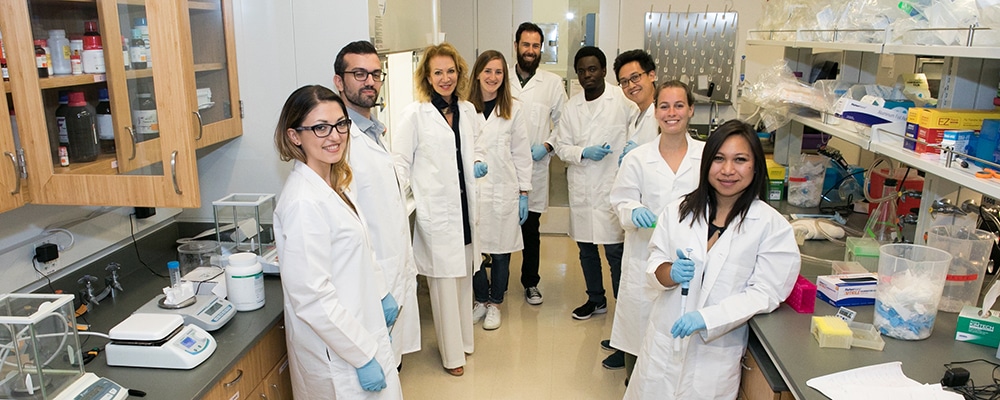Continuing A Legacy of Great Science
The ASRC is the culmination of years of ambitious strategic planning and investment. Renowned research is part of the University’s legacy—13 graduates of CUNY colleges won Nobel Prizes—and in 2001 the University pledged a recommitment to science for the new century. To be a great modern university, CUNY had to have great science.

The University continues to seek out the best and brightest science faculty, building state-of-the-art facilities and competing with the nation’s top institutions for government and foundation research dollars. In 2005, the University declared the next 10 years CUNY’s “Decade of Science.” Elevating research and education in advanced disciplines and emerging technologies—being an exemplar of science in the public interest—has since become elemental to CUNY’s mission.
There are now 1,000 more research faculty on CUNY campuses than in 1998. Many have been part of a “cluster hiring” initiative that has turned specialized corners of biomedicine and biomedical engineering, physics and chemistry into flagship disciplines for the University. Meanwhile, construction of new and upgraded science buildings—nearly $2 billion of capital commitment by New York State—has become a common sight on CUNY campuses across the city. The massive investment in faculty and facilities has helped lead to a near doubling of external grants and contracts since 2000, to more than $400 million.
“The goal from the start was to build a center that focused sharply on the most compelling emerging areas of science for the modern world,” said Founding ASRC Executive Director and former CUNY Vice Chancellor for Research Dr. Gillian M. Small. “We identified areas of great importance to the future of the country, and also took advantage of strengths we already had.” For instance, CUNY’s network of 55 neuroscience laboratories now form a natural relationship with the ASRC.
The Advanced Science Research Center is the crowning symbol of CUNY’s commitment to innovation in science, and owes its conceptual design to the very spirit of collaboration that will define it. More than 50 faculty researchers from throughout the University helped plan the center, meeting with architects and facility specialists during a two-year process that produced a research center whose design is as inventive as the research to be pursued.
The ultimate mission of the ASRC is to foster expansive new research yielding practical benefits for society, including the commercialization of intellectual property and emerging technologies that boost the city and regional economies. CUNY research in the flagship initiatives has already begun bearing fruit, and a new office—the CUNY Hub for Innovation and Entrepreneurship, located near the ASRC in Upper Manhattan—will fast-track new technologies out of the laboratory and into the marketplace.
Cognizant of CUNY’s role in public education, the ASRC’s faculty provides students from throughout CUNY with opportunities to work with them on cutting-edge research projects. Like most high-end research institutions, the ASRC has post-doctoral fellows and graduate students in its labs, but it also is a unique resource of enrichment and science literacy for exceptional undergraduates.
The notion of science in the public interest extends to CUNY’s vital role in the life of New York City and its opportunity to improve science literacy. The IlluminationSpace on the first floor introduces the work being pursued by ASRC researchers to middle and high school students and other visitors. Hands-on, interactive media showcases the five flagship initiatives, and the center will present informal public talks by researchers in the ASRC’s auditorium.
